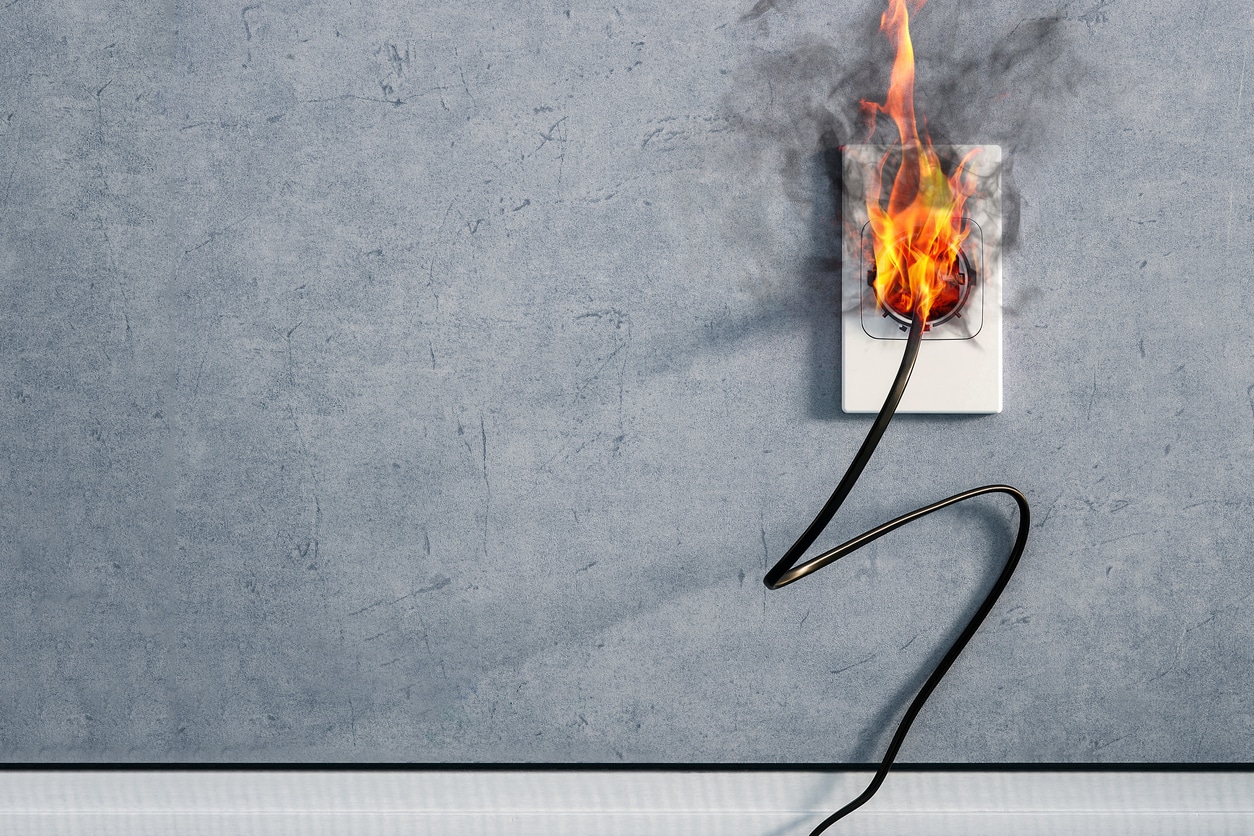Many business owners take comfort in the simple fact that the lights are on and the equipment is humming. But appearances can be deceiving. A system that seems to be running fine on the surface may still be hiding inefficiencies, weak points, or even serious safety hazards.
These problems are critically important since, unlike residential spaces, commercial properties place a much heavier load on wiring, panels, and outlets, often pushing systems to their limits without obvious warning signs.
Sadly, if left unchecked, these hidden issues can snowball into failed inspections, costly downtime, or thousands of dollars in emergency repairs. Luckily, with regular professional service, you can keep systems reliable, protect employees, and avoid expensive surprises.
In this blog, we’ll explore why commercial electrical maintenance matters, how often to schedule it, and the steps you can take to keep your property running smoothly.
Why Regular Commercial Electrical Maintenance Matters
Staying proactive with electrical care is about both avoiding downtime as well as protecting your business, your people, and your reputation.
Safety First: Protecting People and Property
According to the US Fire Association, electrical failures are a leading cause of commercial building fires in the U.S. Old wiring, overloaded panels, and neglected equipment can all spark hazards.
Scheduling electrical safety inspections can help make sure that dangerous issues are caught before they put your staff, customers, or property at risk.
Reducing Downtime and Avoiding Emergency Costs
Every hour without power translates into lost productivity and missed opportunities. Whether you run an office, restaurant, or retail store, downtime impacts your bottom line. Preventive maintenance allows a commercial electrician in Los Angeles to identify worn-out components or overloaded circuits before they cause costly outages.
It’s the difference between scheduling a panel upgrade at your convenience or scrambling during an emergency.
Maintaining Compliance and Insurance Coverage
Commercial properties must adhere to strict electrical codes. Failing to maintain your system could result in fines, failed inspections, or even voided insurance coverage after an incident. Regular electrical inspections demonstrate compliance and show insurers that you’re reducing liability risks.
The Long-Term Benefits of Preventive Care
Preventive care not only improves safety but also helps you budget smarter. Instead of being surprised by sudden failures, you can plan for upgrades in advance. Over time, this approach reduces repair costs, extends the lifespan of your electrical infrastructure, and lowers your utility bills through increased efficiency.
Quick Benefits Recap
- Improves Safety: Protects against fire hazards and injuries.
- Minimizes Downtime: Keeps operations running smoothly.
- Ensures Compliance: Meets code and insurance requirements.
- Saves Money: Cuts energy waste and emergency repair costs.
- Future-Proof Buildings: Prepares for EV chargers, smart tech, and expansion.
Action Step for Owners: Create a maintenance calendar. Block off time annually (or quarterly for high-demand industries) to bring in a professional electrician. Treat it like any other critical business appointment.
How Often Should Commercial Properties Get Electrical Inspections?
Business owners often ask, “How often should I schedule an inspection?” While the general rule of thumb is once a year, the right frequency depends on your property’s unique demands.
Factors That Influence Inspection Frequency
- Building Age: Older wiring is more likely to fail under modern electrical loads.
- Type of Business: Restaurants, manufacturing plants, and medical facilities often require more frequent checks than office spaces.
- Electrical Usage: The more equipment and high-powered devices you run, the greater the stress on your system.
- History of Problems: Frequent breaker trips or past electrical issues may warrant quarterly inspections.
- Local Requirements: Some Los Angeles municipalities and insurance providers mandate specific inspection schedules.
Action Step for Owners: Review your last inspection date. If it’s been more than 12 months (or you can’t remember the last time) schedule a professional inspection as soon as possible.
Preventing Electrical Issues in Commercial Buildings
The best way to deal with electrical problems is to stop them before they start. Preventive maintenance identifies weak points in your system and allows you to take corrective action without disrupting your business.
Common Preventive Services to Request
When scheduling commercial electrical maintenance, ask your electrician to:
- Inspect and tighten electrical connections
- Test circuit breakers and safety devices
- Examine panels for overloads or outdated parts
- Check wiring insulation for signs of wear
- Replace worn outlets and light fixtures
- Review surge protection and emergency backup systems
These small steps go a long way in preventing expensive emergency repairs.
Practical Electrical Maintenance Tips for Business Owners
While most maintenance tasks require a licensed professional, there are steps business owners and managers can take to support a healthy electrical system.
Everyday Best Practices
- Avoid overloading outlets with extension cords or power strips.
- Label your electrical panel so employees know which breakers control which areas.
- Train staff to recognize and report issues like warm outlets, flickering lights, or burning odors.
- Make sure that equipment is turned off at the end of the workday to reduce unnecessary load.
Planning for Growth
As your business expands, so does your electrical demand. If you’re adding new machinery, bringing electrification options to your office space, or installing EV chargers, consult with a commercial electrician in Los Angeles to confirm your panel and wiring can handle the load.
Action Step for Owners: Assign one staff member to monitor and report small electrical issues before they escalate. A “point person” ensures problems don’t slip through the cracks.
Keeping Businesses Powered with Regular Electrical Maintenance
Regular commercial electrical maintenance isn’t a luxury; it’s an essential part of protecting your investment. From preventing fires to avoiding costly downtime, proactive care ensures that your electrical system supports your business rather than putting it at risk.
At Bryden Electrical, we’ve been serving Los Angeles since 1984 with reliable, cost-effective solutions designed specifically for commercial properties. With scheduled inspections and preventive care, you can safeguard your building, your people, and your future.
Schedule Commercial Electrical Maintenance with Bryden Electrical in Los Angeles, CA
Don’t wait until an outage or inspection failure disrupts your business. Bryden Electrical is your trusted partner for ongoing commercial electrical care. We proudly serve West Los Angeles, Beverly Hills, Culver City, Marina del Rey, and surrounding areas.
Reach out online or call us today at 310-470-2900 to schedule a consultation.


